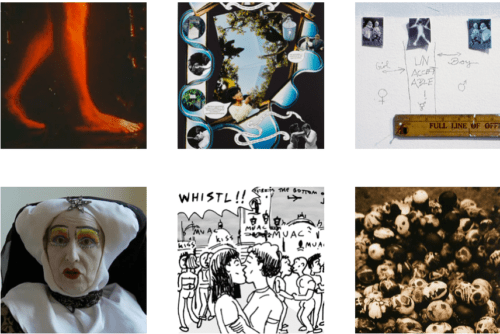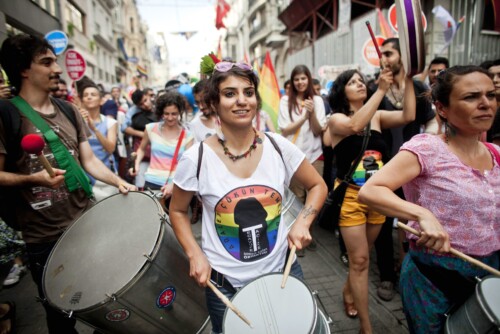Disassembling a Family
It may be more comfortable to imagine that adoption happens because the “reproductive laborer,” or the person who worked to bring the child into the world, is deceased, or in other words, that all adoptable children are orphans. However, the overwhelming majority of children adopted today do have at least one living parent. This became all too clear during the response to the Haitian earthquake of 2010, when some adoptions were facilitated even as U.S. Baptist missionaries’ efforts to “rescue” children with parents were vilified. The New York Times cited a UNICEF spokesman who noted that “In orphanages in Haiti there are an awful lot of children who are not orphans.”1
In the absence of orphans whose parents are dead, the transfer of reproductive labor that adoption represents is regulated by the state, the federal government, and international conventions and agreements. In this highly regulated context, the person who gave birth to the child is for some reason determined not to be capable to take care of him or her (further discussion on this below). Meanwhile, the person who is receiving a legal relationship to the child has been for some reason determined to be able to take care of him or her. Once again, this is stratified reproduction in action. Some larger entity—perhaps a national government represented by a social worker—has identified one person as an unfit parent and a second person as a fit parent.2
To identify someone as an unfit parent is a crucial piece of the politics of contemporary reproduction. It is also a process which is complex and difficult to clearly analyze. On one hand, it is essential to raise the possibility that good parents are being mislabeled as unfit—by state representatives or even by themselves—due to racial, cultural, or class prejudices deeply embedded within governments and local social structures.3 On the other hand, it would be disingenuous to forget that many parents are, indeed, unfit by any reasonable measurement and that many adoptions are thus not fodder for an analysis of stratified reproduction but rather measures that protect children.4 In what follows, I hope to maintain this sense of ambiguity and complexity.
Racial, cultural, and class prejudices have historically been closely tied to policies and administrative decisions that are ostensibly in a child’s best interests. One particularly compelling example comes from aboriginal and Native history. In the U.S., Canada, and Australia, indigenous children were removed from their families on the premise that Indians could not be suitable parents, and that the children would be best off if placed in boarding schools or with white couples.5 Along with child removal, child abandonment can also often be shown to be related to such prejudices. For example, at the beginnings of international adoptions in the 1950s, children were available from Korea not because they had been orphaned by the war but because neither their Korean mothers nor their U.S. soldier fathers were able or willing to raise them. Korean women who had been in relationships with GIs were stigmatized by a society which valued ethnic purity, and their mixed children were no exception to this.6 Thus, even parents who abandon their children may be doing so in a context where there is no social, moral, or economic support for their parenting.
When adoptions are not making the news courtesy of corruption-related scandals in Haiti or Guatemala, they do so in the tabloids and magazines that cover celebrity reproduction. An analysis of reporting around Madonna’s most recent adoption reveals something about the politics of disassembling families.
In March 2009, Reuters reported that Madonna was hoping to adopt her second Malawian child, Chifundo Mercy James. This was immediately controversial for two reasons. First, Malawi does not officially allow international adoptions. For Madonna to initiate proceedings was seen by some as special treatment.7 Second, almost immediately, a man named James Kambewa identified himself as Mercy’s father and stated that he did not want her to be adopted. He claimed that when Mercy’s mother became pregnant he had no money to marry her, and had to move to live with extended family, hundreds of miles away. He was informed that the child died, and he stated that he had never met Mercy, all of which is plausible, if not provable.8
In May, the Malawi appeals court ruled that Madonna could not adopt Mercy due to the residency requirement for adoption.9 Judge Esmie Chondo stated that, “By removing the very safeguard that is supposed to protect our children, the courts could actually facilitate trafficking of children by some unscrupulous individuals who would take advantage of the weakness of the laws of the land. I must confess that there is a gripping temptation to throw caution to the wind and grant an adoption in the hope that there will be a difference in the life of just one child. However, it should be borne in mind that inter-country adoptions may not be and are not the only solution.”10 The following month, the Malawi Supreme Court overruled the appeals court and allowed Madonna to adopt Mercy. The court’s ruling included the statement, “In our judgment, the [child’s welfare] will be better taken care of by having her adopted by the foreign parent rather than for her to grow up in an orphanage where she will have no family life, no love and affection of parents.”11
What is particularly interesting about this case is the way that the media reported what had happened to cause Mercy to end up in the orphanage. CBS reported that Mercy’s mother died in childbirth. Her maternal grandmother, Lucy Chekechiwa, raised her for several months but eventually Mercy “was put in the orphanage because there was no one to breastfeed the baby.”12 The way that Mercy’s grandmother relied on the orphanage to take care of her reminded me strongly of what I had seen in Peru, where I conducted two years of research on adoptions and orphanages. I learned that orphanages are not exclusively places where government or philanthropic workers raise children whose parents have died. In very poor countries, where families often cannot afford to quit working and take care of a child, or to feed every child that is born, orphanages are often used as a safety net. In Peru, people could leave children with the orphanage for up to six months as a relief measure, and adoption proceedings would not be initiated unless the parent or guardian did not visit the child at all during the six-month period. So “orphanage” was really a misnomer—many of the children residing there were there temporarily, and two-thirds of the children in orphanages that recorded numbers of visits had relatives who came to visit them.13
- James C. McKinley, Jr., “53 Haitian Orphans Are Airlifted to U.S.,” The New York Times 29 January 2010. See also: Ginger Thompson, “Case Stokes Haiti’s Fear for Children, and Itself,” The New York Times 1 February 2010. [↩]
- While I do not discuss it here, I recognize that it is not an easy task to prove oneself a fit parent. There are probing, privacy-demolishing interviews with social workers, financial and education requirements, and even, in the case of China, weight limits. Many countries prohibit gay couples from adopting, so these prospective parents—like the Israeli men using a surrogate in India quoted above—are often “forced” to lie about their sexuality and adopt as single people, in direct violation of the policies or moral positions held in the birth-country of their child. See Jessaca Leinaweaver, “The Medicalization of Adoption in and from Peru,” In International Adoption: Global Inequalities and the Circulation of Children, Diana Marre and Laura Briggs, eds. (New York: New York University Press, 2009): 190-207. [↩]
- See Dorothy Roberts, Shattered Bonds: The Color of Child Welfare (New York: Basic Civitas, 2003). See also: Jessaca Leinaweaver, “Foster and Kinship Care: Historical and Cultural Perspectives,” In The Child: An Encyclopedic Companion, Richard A. Shweder, ed. (Chicago: University of Chicago Press, 2009). [↩]
- Adoptive parents may also be found to be unfit, as seen in the recent case of Torry Ann Hansen, who sent her son back to Russia to much publicity. Hansen’s case is quite complex and raises issues of special needs in adoptions and adoptive “rupture.” See E.J. Graff, “Preventing Adoption Disasters,” The Boston Globe 17 April 2010. On ruptured adoptions, see the work of Ana Berástegui: Ana Berástegui, “Adopciones rotas: el peligro de un nuevo maltrato,” Revista Española de Pediatría 63(4): 314-321. [↩]
- See Pauline Turner Strong, “To Forget Their Tongue, Their Name, and Their Whole Relation: Captivity, Extra-Tribal Adoption, and the American Indian Child Welfare Act,” in Relative Values: Reconfiguring Kinship Studies, Sarah Franklin and Susan McKinnon, eds. (Durham, NC: Duke University Press, 2001): 468-93. [↩]
- Tobias Hübinette, “Korean Adoption History,” In Community: Guide to Korea for Overseas Adopted Koreans, Eleana Kim, ed (Seoul: Overseas Koreans Foundation, 2004): 12-19; 25-47. [↩]
- Missy Schwartz, “Madonna’s New Adoption: Malawian Court to Review Her Request,” Entertainment Weekly 27 March 2009. [↩]
- “‘Dad’ Opposes Madonna Adopting Daughter,” CBS The Early Show, 4 May 2009. [↩]
- According to CBS The Early Show, “Malawi requires prospective parents to live there 18 to 24 months while child welfare authorities assess their suitability.” [↩]
- Anita Singh, “Madonna Appeals Failed Adoption Decision,” The Telegraph 4 April 2009. [↩]
- “Madonna Wins Adoption Appeal in Malawi,” CNN 12 June 2009. [↩]
- CBS The Early Show, 2009. [↩]
- See Jessaca Leinaweaver, The Circulation of Children: Adoption, Kinship, and Morality in Andean Peru (Durham: Duke University Press, 2008): 79. [↩]




